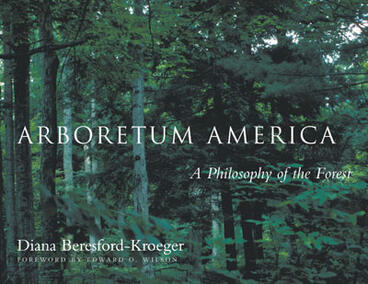Arboretum America
A Philosophy of the Forest
A passionately intelligent, exquisitely illustrated guide to the native trees of the North American continent that offers an informative and entertaining blueprint for rebuilding the biosphere
Description
Combining both hands-on practicality and garden philosophy, Diana Beresford-Kroeger, a self-described "renegade scientist," appeals to the hearts and minds of gardeners everywhere.
Arboretum America's goal is both lofty and down to earth: the salvation of the planet---through the planting of trees. There are many books on both of these subjects. Some warn, some inform, while others meditate on the disappearance of the forests or the meaning of trees. Few books, though, touch on so many aspects of trees, including ways to use them in garden design, as Arboretum America does.
Beresford-Kroeger's remedy is what she calls the Bioplan. The plan consists of how each of twenty different tree groups relates to its natural environment and how these specific trees can be used to promote health or to counteract the effects of pollution and global warming. The plan also reveals the fascinating history of these trees in Native American culture, including their medicinal uses. Finally, the Bioplan offers practical design ideas and tips---where to plant these trees, what season they look best in, what native plants complement them---as well as organic care and how to grow them.
Beresford-Kroeger captures the magic spell that trees cast over us. Yet her holistic approach urges us to think big while acting locally, so that we may someday restore the forest primeval.
Diana Beresford-Kroeger is a botanist, medical and agricultural researcher, lecturer, and self-defined "renegade scientist" in the fields of classical botany, medical biochemistry, organic chemistry, and nuclear chemistry. She lives in Ontario, Canada.
Diana Beresford-Kroeger is a botanist, medical and agricultural researcher, lecturer, and self-defined "renegade scientist" in the fields of classical botany, medical biochemistry, organic chemistry, and nuclear chemistry. She lives in Ontario, Canada.
News, Reviews, Interviews
Read an article about the author in the New York Times
Read: Diana Beresford-Kroeger: Tree Walker UTNE Reader | 10/14/2011

